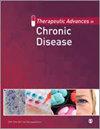The impact of elexacaftor/tezacaftor/ivacaftor on cystic fibrosis health-related quality of life and decision-making about daily treatment regimens: a mixed methods exploratory study
IF 3.3
3区 医学
Q2 PHARMACOLOGY & PHARMACY
引用次数: 0
Abstract
Background:Elexacaftor/tezacaftor/ivacaftor (ETI) has reduced many symptoms of cystic fibrosis (CF).Objectives:We sought to identify the impact of ETI on both symptoms and treatment decisions among adults with CF.Design:Participants were enrolled in a cross-sectional study. Surveys were sent via a RedCap link. Semistructured interviews were administered remotely via Microsoft Teams. Interviews were audio recorded and professionally transcribed.Methods:We assessed Cystic Fibrosis Questionnaire-Revised (CFQ-R) subscales for physical, respiratory, emotion, and treatment, and analyzed semistructured interviews covering CF treatment regimens and daily living. Quantitative and qualitative results were analyzed separately and via a mixed-methods convergence coding matrix.Results:Twenty-four adults with CF taking ETI were included. CFQ-R subscale scores (mean scores/standard deviation) were physical (82.1/22.8), respiratory (83.7/11.2), emotion (65.3/14.2), and treatment (57.5/20.1). Three themes about decision-making for non-ETI-treatments emerged: (1) How I’m feeling, (2) Not noticing a difference, and (3) Uncertainty about long-term impact of modifying treatment regimens, and we found participants weighed each of these factors in their treatment decisions. Key findings from mixed-methods analysis show that among individuals experiencing higher CFQ-R scores for physical and respiratory compared to emotion and treatment, there were statements indicating that while those participants were experiencing better physical health, many continued their burdensome treatment regimens.Conclusion:With little long-term data on the impact of reducing non-ETI treatments, participants weighed how they were feeling, treatment efficacy beliefs, and risk tolerance when making treatment decisions.elexacaftor/tezacaftor/ivacaftor 对囊性纤维化健康相关生活质量和日常治疗方案决策的影响:一项混合方法探索性研究
背景:Elexacaftor/tezacaftor/ivacaftor(ETI)减轻了囊性纤维化(CF)的许多症状。目标:我们试图确定 ETI 对 CF 成人患者的症状和治疗决策的影响。调查问卷通过 RedCap 链接发送。半结构式访谈通过 Microsoft Teams 进行远程管理。方法:我们评估了囊性纤维化问卷-修订版(CFQ-R)中有关身体、呼吸、情绪和治疗的分量表,并分析了涉及 CF 治疗方案和日常生活的半结构式访谈。对定量和定性结果分别进行了分析,并通过混合方法聚合编码矩阵进行了分析。CFQ-R分量表的得分(平均分/标准差)分别为身体(82.1/22.8)、呼吸(83.7/11.2)、情绪(65.3/14.2)和治疗(57.5/20.1)。关于非 ETI 治疗的决策出现了三个主题:(1) 我的感觉;(2) 没有注意到区别;(3) 不确定修改治疗方案的长期影响。混合方法分析的主要结果显示,与情绪和治疗相比,身体和呼吸方面的 CFQ-R 得分较高的人中,有一些陈述表明,虽然这些参与者的身体状况有所改善,但许多人仍在继续他们繁重的治疗方案。结论:由于有关减少非ETI 治疗影响的长期数据很少,参与者在做出治疗决定时会权衡他们的感觉、治疗效果信念和风险承受能力。
本文章由计算机程序翻译,如有差异,请以英文原文为准。
求助全文
约1分钟内获得全文
求助全文
来源期刊

Therapeutic Advances in Chronic Disease
Medicine-Medicine (miscellaneous)
CiteScore
6.20
自引率
0.00%
发文量
108
审稿时长
12 weeks
期刊介绍:
Therapeutic Advances in Chronic Disease publishes the highest quality peer-reviewed research, reviews and scholarly comment in the drug treatment of all chronic diseases. The journal has a strong clinical and pharmacological focus and is aimed at clinicians and researchers involved in the medical treatment of chronic disease, providing a forum in print and online for publishing the highest quality articles in this area.
 求助内容:
求助内容: 应助结果提醒方式:
应助结果提醒方式:


